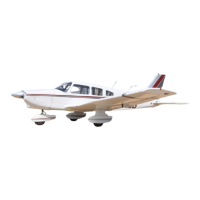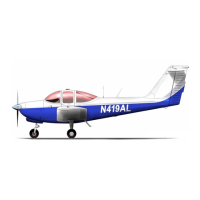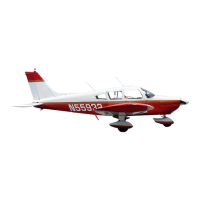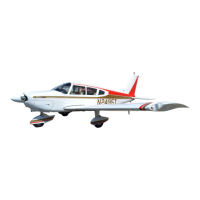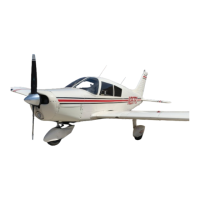THE NEW PIPER AIRCRAFT, INC.
PA-32-301FT / 301XTC
MAINTENANCE MANUAL
PAGE 7
Jun 1/03
2K7
27-30-00
C. Rigging and Adjustment
CAUTION: VERIFY FREE AND CORRECT MOVEMENT OF STABILATOR. WHILE IT WOULD
SEEM SELF-EVIDENT, FIELD EXPERIENCE HAS SHOWN THAT THIS CHECK IS
FREQUENTLY MISINTERPRETED OR NOT PERFORMED AT ALL. ACCORDINGLY,
UPON COMPLETION OF STABILATOR RIGGING AND ADJUSTMENT, VERIFY
THAT THE REAR EDGE OF THE STABILATOR MOVES UP WHEN THE WHEEL IS
PULLED BACK; AND, THAT THE REAR EDGE OF THE STABILATOR MOVES DOWN
WHEN THE WHEEL IS PUSHED FORWARD.
(1) Stabilator Travel:
(a) Level airplane. (See 8-20-00.)
(b) Place stabilator in neutral position. Neutral position is obtained when a level, placed on
stabilator rigging tool (Figure 3), indicates that stabilator is parallel (bubble centered) with
leveling holes shown in 8-20-00, Figure 1. (See 95-00-00, Figure 7, for tool fabrication.)
(c) To check the stabilator travel:
NOTE: The stabilator should contact both of its stops before the control wheel contacts
its stops.
1 Place rigging tool on the upper surface of stabilator.
2 Set number of degree up travel, specified in Figure 2, on a bubble protractor.
3
Place protractor on rigging tool.
4 Raise trailing edge of stabilator. Check that, when stabilator contacts its stops,
protractor bubble is centered.
5
Set the number of degrees down travel specified in Figure 2 on a bubble protractor.
6 Place protractor on the rigging tool.
7
Lower trailing edge of stabilator. Check that, when stabilator contacts its stops,
protractor bubble is centered.
Stabilator Rigging
Figure 3
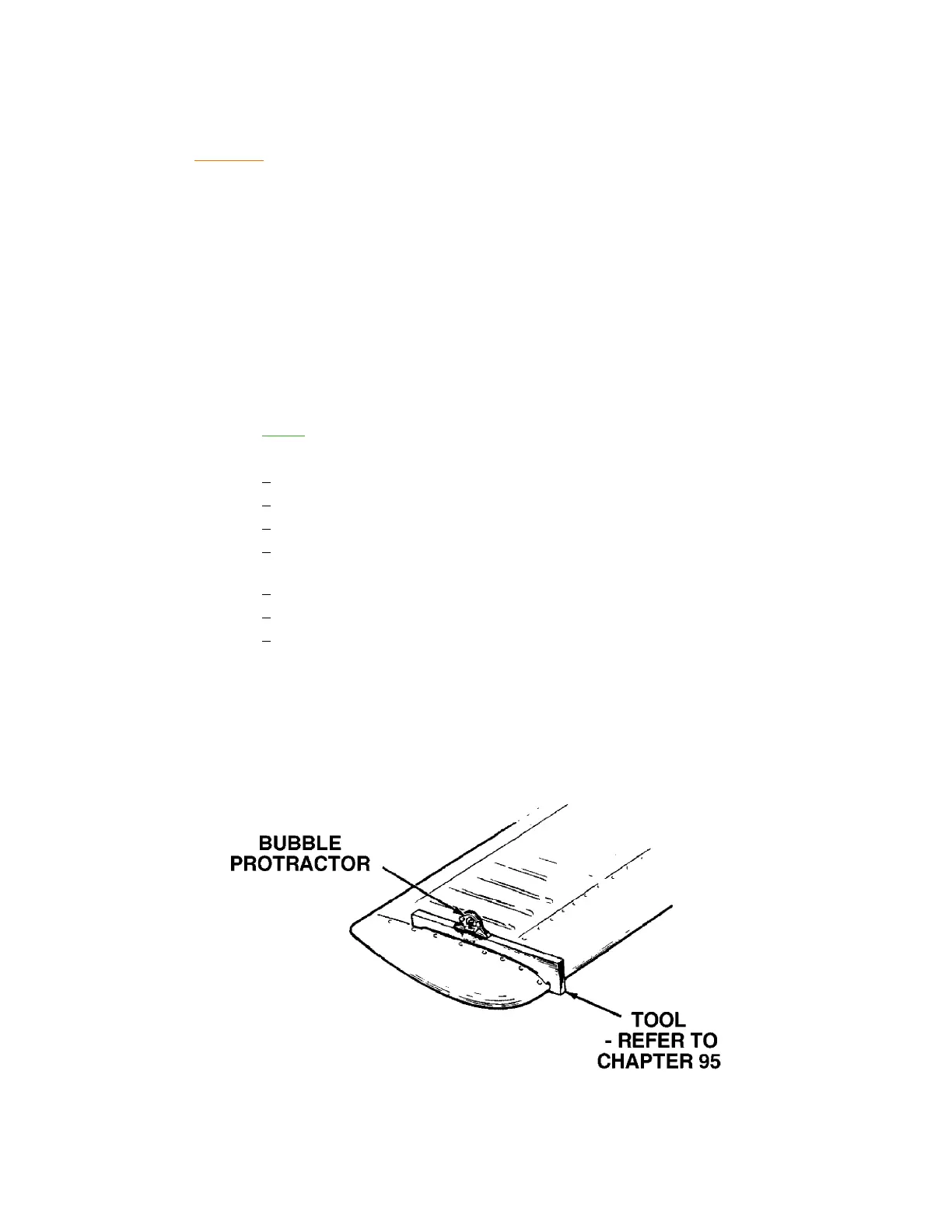